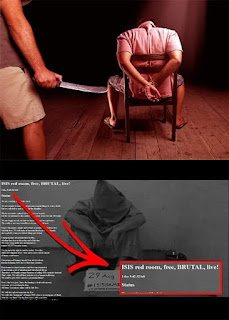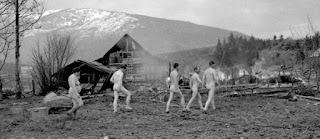During World War II, millions of people were sent to concentration camps, including women.
During World War II, millions of people were sent to concentration camps, including women. Women in concentration camps were subjected to brutal treatment and often faced more severe conditions than their male counterparts. The conditions in the camps were inhumane, and women were often subjected to forced labor, starvation, and medical experiments.
Women were treated differently in concentration camps than men. They were often separated from their families, forced to perform hard labor, and subjected to sexual abuse. Women who were pregnant were also subjected to harsh conditions and medical experimentation. Many women were killed, either as part of the genocide or because they were deemed too weak to continue working.
One of the most notorious concentration camps where women were held was Auschwitz-Birkenau. There, women were subjected to forced labor, starvation, and medical experimentation. Many were killed in gas chambers or through other forms of execution. The camp was designed to dehumanize prisoners, and women were often subjected to sexual abuse and other forms of torture.
Despite the atrocities that women faced in concentration camps, many managed to survive and tell their stories. Some even organized resistance movements within the camps, showing remarkable bravery and resilience in the face of overwhelming adversity. Today, their stories serve as a reminder of the horrors of the Holocaust and the need to ensure that such atrocities never happen again.
Auschwitz concentration camp
Auschwitz concentration camp; also KL Auschwitz or KZ Auschwitz) was a complex of over 40 concentration and extermination camps operated by Nazi Germany in occupied Poland (in a portion annexed into Germany in 1939) during World War II and the Holocaust.
It consisted of Auschwitz I, the main camp (Stammlager) in Oświęcim; Auschwitz II-Birkenau, a concentration and extermination camp with gas chambers; Auschwitz III-Monowitz, a labor camp for the chemical conglomerate IG Farben; and dozens of subcamps. The camps became a major site of the Nazis' final solution to the Jewish question.
After Germany sparked World War II by invading Poland in September 1939, the Schutzstaffel (SS) converted Auschwitz I, an army barracks, into a prisoner-of-war camp. The initial transport of political detainees to Auschwitz consisted almost solely of Poles for whom the camp was initially established.
The bulk of inmates were Polish for the first two years. In May 1940, German criminals brought to the camp as functionaries established the camp's reputation for sadism. Prisoners were beaten, tortured, and executed for the most trivial reasons. The first gassings—of Soviet and Polish prisoners—took place in block 11 of Auschwitz I around August 1941.
Construction of Auschwitz II began the following month, and from 1942 until late 1944 freight trains delivered Jews from all over German-occupied Europe to its gas chambers. Of the 1.3 million people sent to Auschwitz, 1.1 million were murdered.
The number of victims includes 960,000 Jews (865,000 of whom were gassed on arrival), 74,000 non-Jewish Poles, 21,000 Romani, 15,000 Soviet prisoners of war, and up to 15,000 others. Those not gassed were murdered via starvation, exhaustion, disease, individual executions, or beatings. Others were killed during medical experiments.
At least 802 prisoners tried to escape, 144 successfully, and on 7 October 1944, two Sonderkommando units, consisting of prisoners who operated the gas chambers, launched an unsuccessful uprising. Only 789 Schutzstaffel personnel (no more than 15 percent) ever stood trial after the Holocaust ended; several were executed, including camp commandant Rudolf Höss. The Allies' failure to act on early reports of atrocities by bombing the camp or its railways remains controversial.
As the Soviet Red Army approached Auschwitz in January 1945, toward the end of the war, the SS sent most of the camp's population west on a death march to camps inside Germany and Austria. Soviet troops entered the camp on 27 January 1945, a day commemorated since 2005 as International Holocaust Remembrance Day.
In the decades after the war, survivors such as Primo Levi, Viktor Frankl, and Elie Wiesel wrote memoirs of their experiences, and the camp became a dominant symbol of the Holocaust. In 1947, Poland founded the Auschwitz-Birkenau State Museum on the site of Auschwitz I and II, and in 1979 it was named a World Heritage Site by UNESCO.
A former World War I camp for transient workers and later a Polish army barracks, Auschwitz I was the main camp (Stammlager) and administrative headquarters of the camp complex.
Fifty km southwest of Kraków, the site was first suggested in February 1940 as a quarantine camp for Polish prisoners by Arpad Wigand, the inspector of the Sicherheitspolizei (security police) and deputy of Erich von dem Bach-Zelewski, the Higher SS and Police Leader for Silesia.
Richard Glücks, head of the Concentration Camps Inspectorate, sent Walter Eisfeld, former commandant of the Sachsenhausen concentration camp in Oranienburg, Germany, to inspect it. Around 1,000 m long and 400 m wide, Auschwitz consisted at the time of 22 brick buildings, eight of them two-story. A second story was added to the others in 1943 and eight new blocks were built.
Reichsführer-SS Heinrich Himmler, head of the SS, approved the site in April 1940 on the recommendation of SS-Obersturmbannführer Rudolf Höss of the camps inspectorate. Höss oversaw the development of the camp and served as its first commandant.
The first 30 prisoners arrived on 20 May 1940 from the Sachsenhausen camp. German "career criminals" (Berufsverbrecher), the men were known as "greens" (Grünen) after the green triangles on their prison clothing.
Brought to the camp as functionaries, this group did much to establish the sadism of early camp life, which was directed particularly at Polish inmates, until the political prisoners took over their roles. Bruno Brodniewicz, the first prisoner (who was given serial number 1), became Lagerälteste (camp elder). The others were given positions such as kapo and block supervisor.
First mass transport
Further information: First mass transport to Auschwitz concentration camp
The first mass transport—of 728 Polish male political prisoners, including Catholic priests and Jews—arrived on 14 June 1940 from Tarnów, Poland. They were given serial numbers 31 to 758. In a letter on 12 July 1940, Höss told Glücks that the local population was "fanatically Polish, ready to undertake any sort of operation against the hated SS men".
By the end of 1940, the SS had confiscated land around the camp to create a 40-square-kilometer (15 sq mi) "zone of interest" (Interessengebiet) patrolled by the SS, Gestapo and local police. By March 1941, 10,900 were imprisoned in the camp, most of them Poles.
An inmate's first encounter with Auschwitz, if they were registered and not sent straight to the gas chamber, was at the prisoner reception center near the gate with the Arbeit macht frei sign, where they were tattooed, shaved, disinfected, and given a striped prison uniform. Built between 1942 and 1944, the center contained a bathhouse, laundry, and 19 gas chambers for delousing clothes. The prisoner reception center of Auschwitz I became the visitor reception center of the Auschwitz-Birkenau State Museum.
Crematorium I, first gassings
Construction of crematorium I began at Auschwitz I at the end of June or beginning of July 1940. Initially intended not for mass murder but for prisoners who had been executed or had otherwise died in the camp, the crematorium was in operation from August 1940 until July 1943, by which time the crematoria at Auschwitz II had taken over. By May 1942 three ovens had been installed in crematorium I, which together could burn 340 bodies in 24 hours.
The first experimental gassing took place around August 1941, when Lagerführer Karl Fritzsch, at the instruction of Rudolf Höss, murdered a group of Soviet prisoners of war by throwing Zyklon B crystals into their basement cell in block 11 of Auschwitz I. A second group of 600 Soviet prisoners of war and around 250 sick Polish prisoners were gassed on 3–5 September. The morgue was later converted to a gas chamber able to hold at least 700–800 people.[c] Zyklon B was dropped into the room through slits in the ceiling.
First mass transport of Jews
Further information: Bytom Synagogue and Beuthen Jewish Community
Historians have disagreed about the date the all-Jewish transports began arriving in Auschwitz. At the Wannsee Conference in Berlin on 20 January 1942, the Nazi leadership outlined, in euphemistic language, its plans for the Final Solution. According to Franciszek Piper, the Auschwitz commandant Rudolf Höss offered inconsistent accounts after the war, suggesting the extermination began in December 1941, January 1942, or before the establishment of the women's camp in March 1942.
In Kommandant in Auschwitz, he wrote: "In the spring of 1942 the first transports of Jews, all earmarked for extermination, arrived from Upper Silesia." On 15 February 1942, according to Danuta Czech, a transport of Jews from Beuthen, Upper Silesia (Bytom, Poland), arrived at Auschwitz I and was sent straight to the gas chamber.
In 1998 an eyewitness said the train contained "the women of Beuthen".[e] Saul Friedländer wrote that the Beuthen Jews were from the Organization Schmelt labor camps and had been deemed unfit for work. According to Christopher Browning, transports of Jews unfit for work were sent to the gas chamber at Auschwitz from autumn 1941. The evidence for this and the February 1942 transport was contested in 2015 by Nikolaus Wachsmann.
Around 20 March 1942, according to Danuta Czech, a transport of Polish Jews from Silesia and Zagłębie Dąbrowskie was taken straight from the station to the Auschwitz II gas chamber, which had just come into operation. On 26 and 28 March, two transports of Slovakian Jews were registered as prisoners in the women's camp, where they were kept for slave labour; these were the first transports organized by Adolf Eichmann's department IV B4 (the Jewish office) in the Reich Security Head Office (RSHA).[f] On 30 March the first RHSA transport arrived from France.
"Selection", where new arrivals were chosen for work or the gas chamber, began in April 1942 and was conducted regularly from July. Piper writes that this reflected Germany's increasing need for labor. Those selected as unfit for work were gassed without being registered as prisoners.
There is also disagreement about how many were gassed in Auschwitz I. Perry Broad, an SS-Unterscharführer, wrote that "transport after transport vanished in the Auschwitz [I] crematorium." In the view of Filip Müller, one of the Auschwitz I Sonderkommando, tens of thousands of Jews were murdered there from France, Holland, Slovakia, Upper Silesia, and Yugoslavia, and from the Theresienstadt, Ciechanow, and Grodno ghettos.
Against this, Jean-Claude Pressac estimated that up to 10,000 people had been murdered in Auschwitz I.[48] The last inmates gassed there, in December 1942, were around 400 members of the Auschwitz II Sonderkommando, who had been forced to dig up and burn the remains of that camp's mass graves, thought to hold over 100,000 corpses.
Auschwitz II-Birkenau
After visiting Auschwitz I in March 1941, it appears that Himmler ordered that the camp be expanded, although Peter Hayes notes that, on 10 January 1941, the Polish underground told the Polish government-in-exile in London: "the Auschwitz concentration camp ...can accommodate approximately 7,000 prisoners at present, and is to be rebuilt to hold approximately 30,000." Construction of Auschwitz II-Birkenau—called a Kriegsgefangenenlager (prisoner-of-war camp) on blueprints—began in October 1941 in Brzezinka, about three kilometers from Auschwitz I.
The initial plan was that Auschwitz II would consist of four sectors (Bauabschnitte I–IV), each consisting of six subcamps (BIIa–BIIf) with their own gates and fences. The first two sectors were completed (sector BI was initially a quarantine camp), but the construction of BIII began in 1943 and stopped in April 1944, and the plan for BIV was abandoned.
SS-Sturmbannführer Karl Bischoff, an architect, was the chief of construction.[51] Based on an initial budget of RM 8.9 million, his plans called for each barracks to hold 550 prisoners, but he later changed this to 744 per barracks, which meant the camp could hold 125,000, rather than 97,000.[55] There were 174 barracks, each measuring 35.4 by 11.0 m (116 by 36 ft), divided into 62 bays of 4 m2 (43 sq ft).
The bays were divided into "roosts", initially for three inmates and later for four. With personal space of 1 m2 (11 sq ft) to sleep and place whatever belongings they had, inmates were deprived, Robert-Jan van Pelt wrote, "of the minimum space needed to exist".
The prisoners were forced to live in the barracks as they were building them; in addition to working, they faced long roll calls at night. As a result, most prisoners in BIb (the men's camp) in the early months died of hypothermia, starvation or exhaustion within a few weeks. Some 10,000 Soviet prisoners of war arrived at Auschwitz I between 7 and 25 October 1941,[58] but by 1 March 1942 only 945 were still registered; they were transferred to Auschwitz II, where most of them had died by May.
Crematoria II–V
Further information: § Gas chambers
The first gas chamber at Auschwitz II was operational by March 1942. On or around 20 March, a transport of Polish Jews sent by the Gestapo from Silesia and Zagłębie Dąbrowskie was taken straight from the Oświęcim freight station to the Auschwitz II gas chamber, then buried in a nearby meadow.
The gas chamber was located in what prisoners called the "little red house" (known as bunker 1 by the SS), a brick cottage that had been turned into a gassing facility; the windows had been bricked up and its four rooms converted into two insulated rooms, the doors of which said "Zur Desinfektion" ("to disinfection").
A second brick cottage, the "little white house" or bunker 2, was converted and operational by June 1942. When Himmler visited the camp on 17 and 18 July 1942, he was given a demonstration of a selection of Dutch Jews, a mass-murder in a gas chamber in bunker 2, and a tour of the building site of Auschwitz III, the new IG Farben plant being constructed at Monowitz.
Use of bunkers I and 2 stopped in spring 1943 when the new crematoria were built, although bunker 2 became operational again in May 1944 for the murder of the Hungarian Jews. Bunker I was demolished in 1943 and bunker 2 in November 1944.[
Plans for crematoria II and III show that both had an oven room 30 by 11.24 m (98.4 by 36.9 ft) on the ground floor, and an underground dressing room 49.43 by 7.93 m (162.2 by 26.0 ft) and gas chamber 30 by 7 m (98 by 23 ft). The dressing rooms had wooden benches along the walls and numbered pegs for clothing. Victims would be led from these rooms to a five-yard-long narrow corridor, which in turn led to a space from which the gas chamber door opened.
The chambers were white inside, and nozzles were fixed to the ceiling to resemble showerheads.[63] The daily capacity of the crematoria (how many bodies could be burned in a 24-hour period) was 340 corpses in crematorium I; 1,440 each in crematoria II and III; and 768 each in IV and V.
By June 1943 all four crematoria were operational, but crematorium I was not used after July 1943. This made the total daily capacity 4,416, although by loading three to five corpses at a time, the Sonderkommando were able to burn some 8,000 bodies a day. This maximum capacity was rarely needed; the average between 1942 and 1944 was 1,000 bodies burned every day
















Comments
Post a Comment